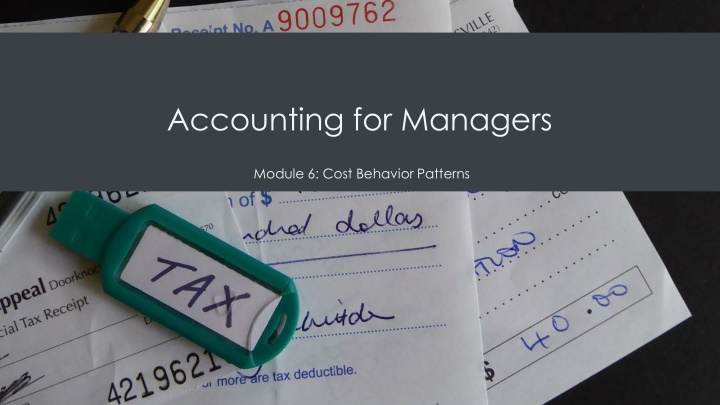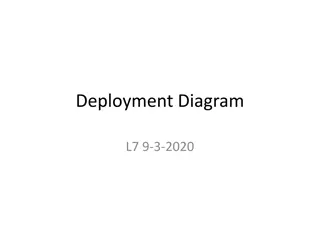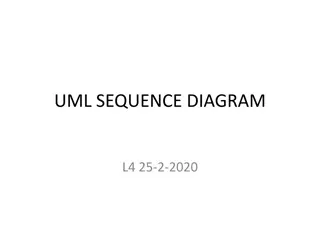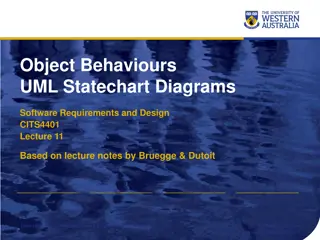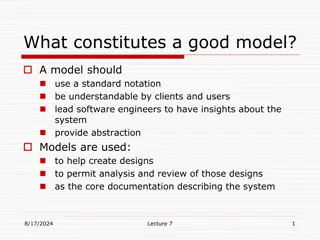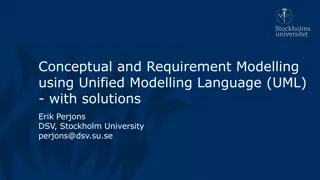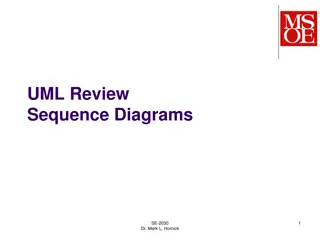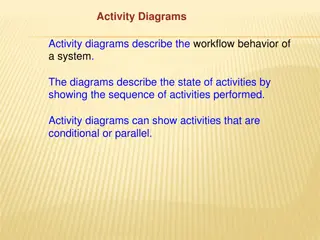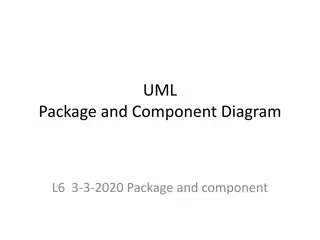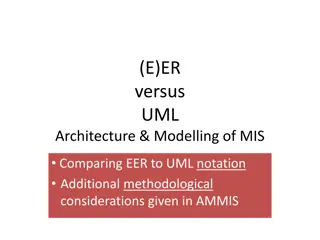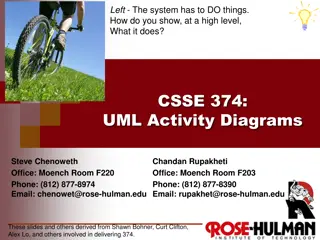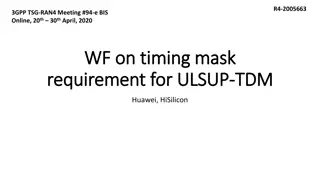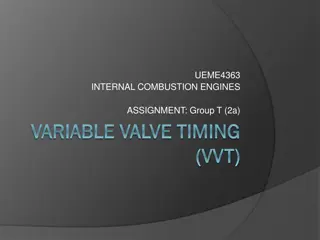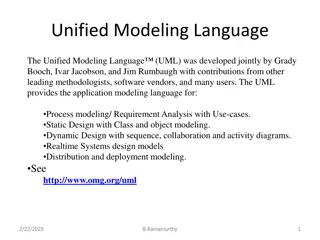Introduction to UML Timing Diagrams
UML timing diagrams display changes in state or value of elements over time. They show interactions between timed events, time constraints, and duration constraints. Elements include state lifelines, value lifelines, and how they can be stacked together. This example-rich guide covers the basics and usage of timing diagrams.v
Download Presentation

Please find below an Image/Link to download the presentation.
The content on the website is provided AS IS for your information and personal use only. It may not be sold, licensed, or shared on other websites without obtaining consent from the author.If you encounter any issues during the download, it is possible that the publisher has removed the file from their server.
You are allowed to download the files provided on this website for personal or commercial use, subject to the condition that they are used lawfully. All files are the property of their respective owners.
The content on the website is provided AS IS for your information and personal use only. It may not be sold, licensed, or shared on other websites without obtaining consent from the author.
E N D
Presentation Transcript
Accounting for Managers Module 6: Cost Behavior Patterns
Product vs. Period Costs Product Costs: any cost of acquiring or producing a product Ex/: Direct materials, labor, overhead Period Costs: Any costs not related to the manufacture or acquisition of the product. Ex/: Sales commissions, administrative costs, advertising, rent of office space.
Manufacturing Costs Manufacturing overhead: This is a catch-all category and it includes any costs of manufacturing other than materials and labor. Incidental materials and labor, maintenance on machinery or custoridal wages would be included here. Any expense incurred for the manufacture or acquisition of the product a company makes or sells, that is NOT direct labor or direct materials, will be put here, and then later allocated.
Fixed vs. Variable Costs Committed Fixed Cost vs. Discretionary Fixed Costs Fixed costs happen regardless of the manufacturing or sales level Variable costs will change depending on how many products you buy or manufacture. They all depend on how much product is being sold.
Relevant Range The relevant range is the range of activity where the assumption that cost behavior is a straight line (linear) is reasonably valid. Managerial accountants like to assume that the relationship between a cost and an activity run in a straight line.
Mixed Costs The equation for mixed costs looks like this: Y= The total mixed costs a= The total fixed costs b= The variable cost per unit of activity X= The level of activity The steeper the slope on the variable line, the higher the variable cost per unit.
Independent vs. Dependent Variable Y= total maintenance cost and will be plotted on the vertical axis of our graph. This cost is the dependent variable since the amount depends on the activity for the period. X= the activity or number of dogs groomed. This will be plotted on the horizontal axis and is the independent variable, because it is the factor that causes the variation in the cost.
High-Low Method With this method we first look for the period with the lowest level of activity and the highest level. Variable cost = Cost at the high activity level-cost at the low level of activity, High activity level Low activity level, Variable cost = Change in cost NOTE*: This method can ONLY be used if there is a linear correlation between the costs and quantity!
Least Squares Regression Method This method uses all of the data available to separate the fixed and variable portions of a mixed cost. A regression line is fitted into the data using the following formula: Y= a + bX Y= maintenance costs X= Number of dogs groomed a= the total fixed cost b= the variable cost per unit of activity
Quick Review It s important to understand the differences between the variety of costs you ll be faced with: Product vs. period costs Manufacturing costs Fixed vs. variable costs Mixed costs Knowing how to utilize both the high-low method and the least squares regression method will assist you in accurately determining your costs.
